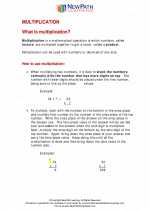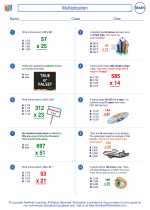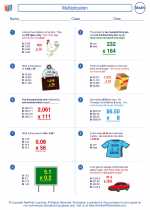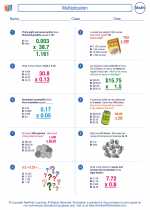Constants in Mathematics
In mathematics, a constant is a value that does not change. It is a fixed value that remains the same regardless of any other variables or factors. Constants are used in various mathematical equations, formulas, and expressions.
Types of Constants
There are different types of constants in mathematics:
- Numeric Constants: These are specific numerical values such as 3, 5, 0.5, etc.
- Physical Constants: These are values that represent physical quantities, such as the speed of light (c), gravitational constant (G), etc.
- Mathematical Constants: These are special values that arise in mathematical calculations, such as π (pi), e (Euler's number), etc.
Examples of Constants
Here are some examples of constants:
- The value of π (pi) is approximately 3.14159.
- The speed of light in a vacuum is approximately 299,792,458 meters per second.
- The gravitational constant (G) is approximately 6.674 × 10-11 m3 kg-1 s-2.
- The value of e (Euler's number) is approximately 2.71828.
Study Guide
To understand constants better, here are some key points to remember:
- Understand the concept of a constant as a fixed value that does not change.
- Identify different types of constants, such as numeric, physical, and mathematical constants.
- Memorize important mathematical constants like π and e, as they are commonly used in various mathematical calculations.
- Learn to recognize constants in equations and expressions, and distinguish them from variables.
Practice solving problems and equations involving constants to strengthen your understanding of their role in mathematics.
Conclusion
Constants are essential components of mathematical concepts and calculations. Understanding their role and significance will help you in various mathematical applications and problem-solving.
.◂Math Worksheets and Study Guides Sixth Grade. Multiplication
Study Guide Multiplication
Multiplication  Worksheet/Answer key
Worksheet/Answer key Multiplication
Multiplication  Worksheet/Answer key
Worksheet/Answer key Multiplication
Multiplication  Worksheet/Answer key
Worksheet/Answer key Multiplication
Multiplication 

 Worksheet/Answer key
Worksheet/Answer key
 Worksheet/Answer key
Worksheet/Answer key
 Worksheet/Answer key
Worksheet/Answer key

The resources above cover the following skills:
The Number System
Compute fluently with multi-digit numbers and find common factors and multiples.
Fluently multiply and divide multi-digit whole numbers using the standard algorithm. Express the remainder as a whole number, decimal, or simplified fraction; explain or justify your choice based on the context of the problem.